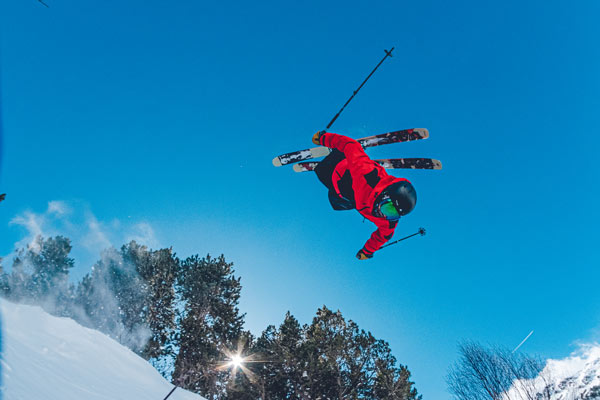 Skiing is an exhilarating winter sport that not only offers a thrilling outdoor experience but also acts as an excellent workout. No matter whether you’re carving down steep slopes or pushing across flat terrain, skiing engages various muscle groups, it challenges your balance and it gets your heart pumping.
Skiing is an exhilarating winter sport that not only offers a thrilling outdoor experience but also acts as an excellent workout. No matter whether you’re carving down steep slopes or pushing across flat terrain, skiing engages various muscle groups, it challenges your balance and it gets your heart pumping.
But, how many calories does skiing burn exactly? In this blog post, we’ll answer exactly that, so let’s get into it and start exploring the calories burned by skiing and how this sport compares to other exercise.
How many calories do you burn skiing in a day?
The number of calories burned by skiing can vary widely depending on two main factors. One is how intensely and for how long you’re skiing. If you’re on tougher terrain or if you’re spending an entire day on the ski slopes of Andorra, then you’ll naturally burn even more calories in skiing compared to a more moderate experience. The other main factor to consider is your own body. The ski calories burned per hour will be less if you’re already a very slim, fit and active person.
But, let’s try to answer the how many calories does skiing burn question in the most general terms. As per research published by the Compendium of Physical Activities, a 150-pound skier is expected to burn around 360 calories per hour if skiing downhill at a moderate level of intensity.
Is skiing good for weight loss?
Skiing is absolutely an excellent activity for those looking to lose weight. We all know the equation of weight loss occurring when you burn more calories than you consume and that absolutely happens when skiing. Furthermore, a day on the slopes means you might not be eating as much as you would on a different kind of holiday, even if the Andorra restaurants are well worth stopping by for lunch or in the evenings.
Why does skiing burn so many calories?
Why is it so easy to burn calories in skiing? Well, it has a lot to do with the fact that skiing is a sport that engages multiple muscle groups, including your legs, your core and your arms, especially if you're using ski poles as part of your ski equipment. That means you’re working all kinds of muscles, from quadriceps to hamstrings to glutes to calves, so you’re exercising the entire body and reaching a high level of ski calories burned per hour. There is also a high cardiovascular demand when skiing for a whole day, plus you’ll be in cold weather conditions and this also boosts the calories burned by skiing.
Does skiing burn a lot of fat?
Although the primary source of energy during high-intensity exercise like skiing comes from carbohydrates, prolonged periods of activity, like a full day of skiing, can also tap into your fat reserves.
Of course, fat loss also depends on your overall energy balance and it’s important to understand that if you're still consuming more calories than you burn then skiing won’t burn fat for you. For the best results, if you do want to burn off some body fat, focus on a balanced diet that complements your skiing sessions.
Does skiing burn more calories than walking?
In general, the answer is that yes, the ski calories burned per hour are higher than the walking calories burned per hour. That’s primarily because of the higher intensity associated with skiing. If comparing skiing with running then that may be a different story, but this winter sport is certainly an effective way to burn calories. More than just burning calories, skiing is a sport that can improve your overall fitness and your level of agility. It’s an ideal activity for those looking to maintain or improve their health in the winter time.
